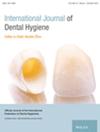To assess user perceptions of different commercially available fluoride mouthwashes (FL-MWs).
A single-blind, randomized clinical trial was conducted. Participants were randomly assigned to a sequence of six different FL-MWs, one of which contained alcohol. For each visit, participants rinsed with one specific mouthwash (15 mL) for 30 s. After rinsing, participants completed a questionnaire with a visual analogue scale. Questions focused on overall taste, mild/pungent feeling, taste duration, foaming effect, burning sensation, sensitivity, numbness, dryness, rinsing time, smell, and colour of the mouthwashes. Descriptive analyses and statistical tests regarding differences among and between the mouthwashes were performed.
Overall, 53 participants completed the study protocol, including nine who did, however, not rinse with the alcohol-containing mouthwash due to religious reasons. Among the mouthwashes, significant differences were found for foaming effect, sensitivity, rinsing time, smell, and colour (p < 0.05). Pairwise comparison for smell did not reveal a difference, and foaming was within the acceptance range (low to medium foaming). Coloured mouthwashes were more appreciated than transparent solutions (p = 0.00). The mouthwash containing essential oils and alcohol produced significantly more sensitivity (p = 0.00) and, in general, participants experienced the rinsing time significantly longer (p < 0.05) compared to the non-alcohol-containing mouthwashes.
There is heterogeneity in user perceptions and preferences for FL-MWs, with a significant difference in foaming effect, sensitivity, rinsing time, smell, and colour. Coloured mouthwashes are preferred. The mouthwash containing essential oils and alcohol was less acceptable in relation to sensitivity and rinsing time.



